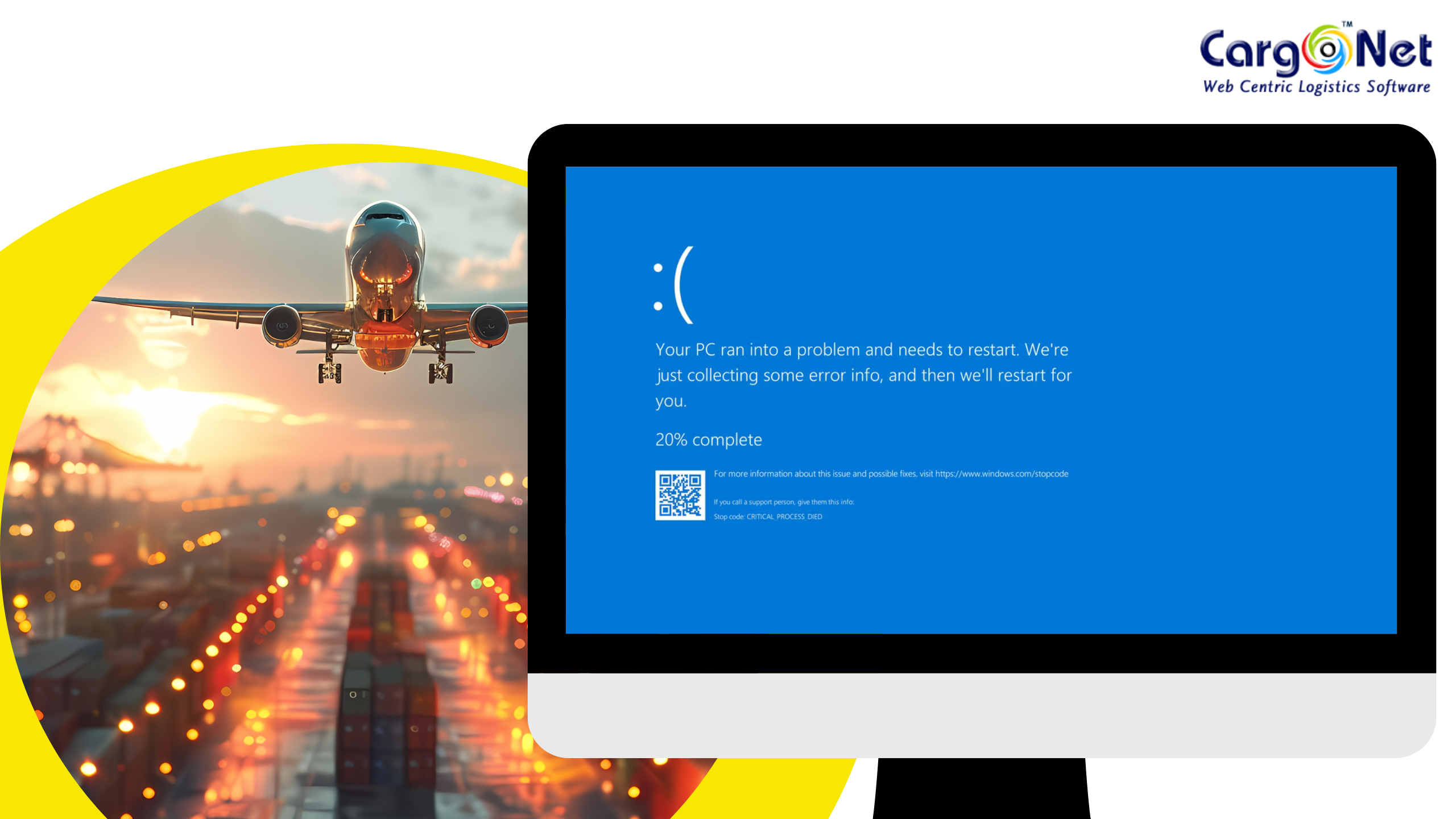Master Air Waybill (MAWB) vs. House Air Waybill (HAWB): Key Differences and Uses
In the realm of air freight, two critical documents facilitate the transportation of goods: the Master Air Waybill (MAWB) and the House Air Waybill (HAWB). Understanding the differences between these documents is essential for efficient logistics management. This blog will explore the key distinctions and uses of MAWB and HAWB, and how they fit into the broader context of air freight operations.
What is a Master Air Waybill (MAWB)?
A Master Air Waybill (MAWB) is issued by an airline or its authorized agent. It serves as a contract between the shipper and the airline, outlining the terms and conditions of carriage. The MAWB covers the entire journey of the shipment from the point of origin to the final destination.
- Issued By : Airline or its authorized agent.
- Purpose : Acts as a contract of carriage between the shipper and the airline.
- Scope : Covers the entire journey from origin to destination.
- Key Information : Includes details such as the shipper, consignee, flight details, and description of goods.
What is a House Air Waybill (HAWB)?
A House Air Waybill (HAWB) is issued by a freight forwarder. It details the agreement between the freight forwarder and the shipper. The HAWB is used when a freight forwarder consolidates multiple shipments into one master shipment under a single MAWB.
- Issued By : Freight forwarder.
- Purpose : Acts as a contract between the freight forwarder and the shipper.
- Scope : Covers the individual shipment within the consolidated load.
- Key Information : Includes details such as the shipper, consignee, and description of goods, often providing more detailed information about the shipment than the MAWB.
Key Differences Between MAWB and HAWB
- Issuing Party
- MAWB : Issued by the airline or its authorized agent.
- HAWB : Issued by the freight forwarder.
- Contractual Relationship
- MAWB : Establishes the contract of carriage between the shipper and the airline.
- HAWB : Establishes the contract between the freight forwarder and the shipper.
- Level of Detail
- MAWB : Generally provides broader details relevant to the entire consolidated shipment.
- HAWB : Provides specific details about individual shipments within the consolidated load.
- Scope of Coverage
- MAWB : Covers the entire journey of the consolidated shipment from the point of origin to the final destination.
- HAWB : Covers the journey of the individual shipment within the consolidated load.
- Role in Consolidation
- MAWB : Used for the consolidated shipment, containing multiple HAWBs.
- HAWB : Used for individual shipments that are part of a larger consolidated shipment under a single MAWB.
Efficiently managing HAWBs and MAWBs can be challenging due to the complexity and volume of data involved. CargoNet software offers comprehensive solutions to streamline these processes.
- Automated Documentation
- Generate accurate MAWB and HAWB documents with ease, using pre-built templates and customization options.
- Compliance Assurance
- Built-in compliance checks ensure all shipments adhere to international shipping regulations.
- Real-Time Tracking
- Track both MAWB and HAWB shipments in real-time, receiving instant updates and notifications.
- Centralized Document Management
- Store and manage all MAWB and HAWB documents in a secure, centralized digital repository.
- Seamless Integration
- Integrate with ERP systems and carrier platforms for smooth data flow and reduced inefficiencies.
- Comprehensive Reporting and Analytics
- Access advanced reporting and analytics tools to generate custom reports and gain insights into shipment performance.
Conclusion
Understanding the differences between Master Air Waybills (MAWB) and House Air Waybills (HAWB) is crucial for effective air freight management. CargoNet software addresses the challenges associated with managing these documents by providing automated solutions, ensuring compliance, and enhancing visibility and efficiency.
Ready to optimize your air freight operations?
Sign up for a free trial of CargoNet software today and experience the benefits of streamlined MAWB and HAWB management. Contact our sales team for a personalized demo and see how CargoNet can meet your specific needs.
Recent Posts

Navigating Freight Movement Challenges in Landlocked Countries: How CargoNet Software Can Transform Logistics

CargoNet AI: Transforming Logistics Through Intelligent Email Processing

Digital Freight Forwarders Using CargoNet vs Traditional Freight Forwarders

Microsoft Outage Grounds Flights and Disrupts Cargo Chains: How to Prepare for Future Incidents

Master Air Waybill (MAWB) vs. House Air Waybill (HAWB): Key Differences and Uses

How to Generate a House Airway Bill Using CargoNet Freight Software: A Step-by-Step Guide

Avoiding Cargo Handling Errors: Leveraging CargoNet Software for Safe and Efficient Logistics

The Future of Air Cargo: Exploring CargoNet, Your Ultimate IATA Agent Software

Embracing the Future of Air Cargo: The Transition from Traditional AWB Bill to e-AWB Bill Software solution with CargoNet

Top 10 Trends Shaping Freight Forwarder Software in 2024

Understanding the Impact of of War Fuel Surcharge in Sea and Air Freight

AI Agents: Transforming Logistics and Supply Chains in an Ever-Changing Market

Safeguarding Data Security in Cloud-Based Freight Forwarding Software Systems

Streamlining Logistics Operations: Integrating CargoNet ERP with ZATCA Invoicing (Saudi Arabia)

Saudi Arabia E-Invoicing Transformation – A Comprehensive Guide
F.A.Q
F.A.Q
Do you have additional questions?
- It’s not required to maintain Different software for different activities, like to open a docket in one software, for B/L Printing one software and for Accounts in a different one. All are included under one Roof
- Data of other branches shall be collected and it shall be maintained in the HO as and when required.
- Multi Location Data Collection Environment (MLDCE)
- Multi Location Data Integration
- Consolidated Reports of Branches
- Customized User Security Levels
- Document Management System In-built Accounting System
- In – Built Mailing System
- Credit Limits for Debtors / Creditors
- Our Freight forwarding software provides the Red alert of the Brokerage Bills not submitted to shipping lines as well the outstanding of the Brokerage bills which are not Set off.
- provides the Red alert of invoices that are not billed to the Customers.
- Provides the consolidated reports based on the Modules and the Branches
- Provides the Shipment wise Profitability reports based on the Job No’s, Salesman wise, Module wise
- Provides reports like SOB, Pre-alert, Stuffing, Loading, Transshipment details etc….on a Single Click
- Provides Consolidated Trial Balance, Profit & Loss, Balance Sheet, Ledger Report, BRS etc….
- Yes! Provides the Shipment wise Profitability reports based on the Job No’s
- Provides the Shipment wise Profitability reports based on the Salesman wise
- Provides the Shipment wise Profitability reports based on the Module wise
Yes! The Reports can export to PDF format, Excel, Word Format etc.
Yes! B/L print outs can be taken in a Single click
- Yes! User Privileges can be set based on their Profile/Designation.
- Back up of the Data can be taken in a single click
Freight forwarders provide their customers with a range of services including consolidation, documentation, freight payment and customs clearance. The service is offered by freight forwarders who serve as an intermediary between the shipper and the forwarder’s transportation network.
- Entering data about each shipment
- Finding out about rates
- Finding out about documentation
- Making bookings
- Managing quotations
The world is calling, but the struggle with complex international exports can be overwhelming. Shipping software allows you to:
Optimize systems: Automate operations, expand productivity, and increase accuracy.
To achieve global ordering: Track inventory in real time; compatibility with global networks; and make decisions based on data.
Enhanced customer service: Respond quickly, provide clear information, and rise above language issues.
Choose the right freight forwarding software to open your company to global growth.
Choosing the right freight software is like choosing your superhero gear – it empowers you to handle complex logistics and soar to new heights. Here are some basics to ensure your software is a real winner:
Effortless Shipping: Imagine recording, tracking and reporting on shipments with a few clicks. Your software may simplify these processes, freeing you up to focus on bigger things.
Simplified bookkeeping: Creating accurate quotes, invoices, and report cards is unlike paper invoices. Look for software that simplifies paperwork and keeps everything organized.
Strong customer relationships: A robust CRM system in your software allows you to manage customer interactions, send personalized communications, and foster strong relationships – the foundation of any successful business.
Data push decisions: Your software program can be your own record analyzer. Look for features that provide insightful analysis of overall performance, identify trends, and empower your company to make informed choices.
Easy conversation: Does your software play well with others? Integrating accounting, CRM and visit management systems improves information flow and eliminates accounting silos – a huge win for efficiency
By installing those essential components, you equip your logistics with the software muscle needed to overcome any system challenges and achieve breakthrough success
A quantity of steps are worried in integrating and employing freight forwarding software program (CargoNet) inside your commercial enterprise, these encompass:
Evaluation and Planning: Assess the existing freight forwarding processes in your organisation and discover regions to be stepped forward. Establish your precise requirements and dreams for imposing CargoNet software program application. Develop a plan of implementation along with timeframes, sources and key individuals.
Customization and Configuration: Collaborate with our implementation group in order to personalize the software program in line with the workflows or processes used by your very own organization. Set up configurations, user privileges, in addition to connections to other systems employed across your business enterprise.
Data Migration: Prepare your present day Freight Forwarding statistics for migration into CargoNet. Make certain that statistics is accurate and sound by way of purging it off old data even as formatting it efficaciously
















